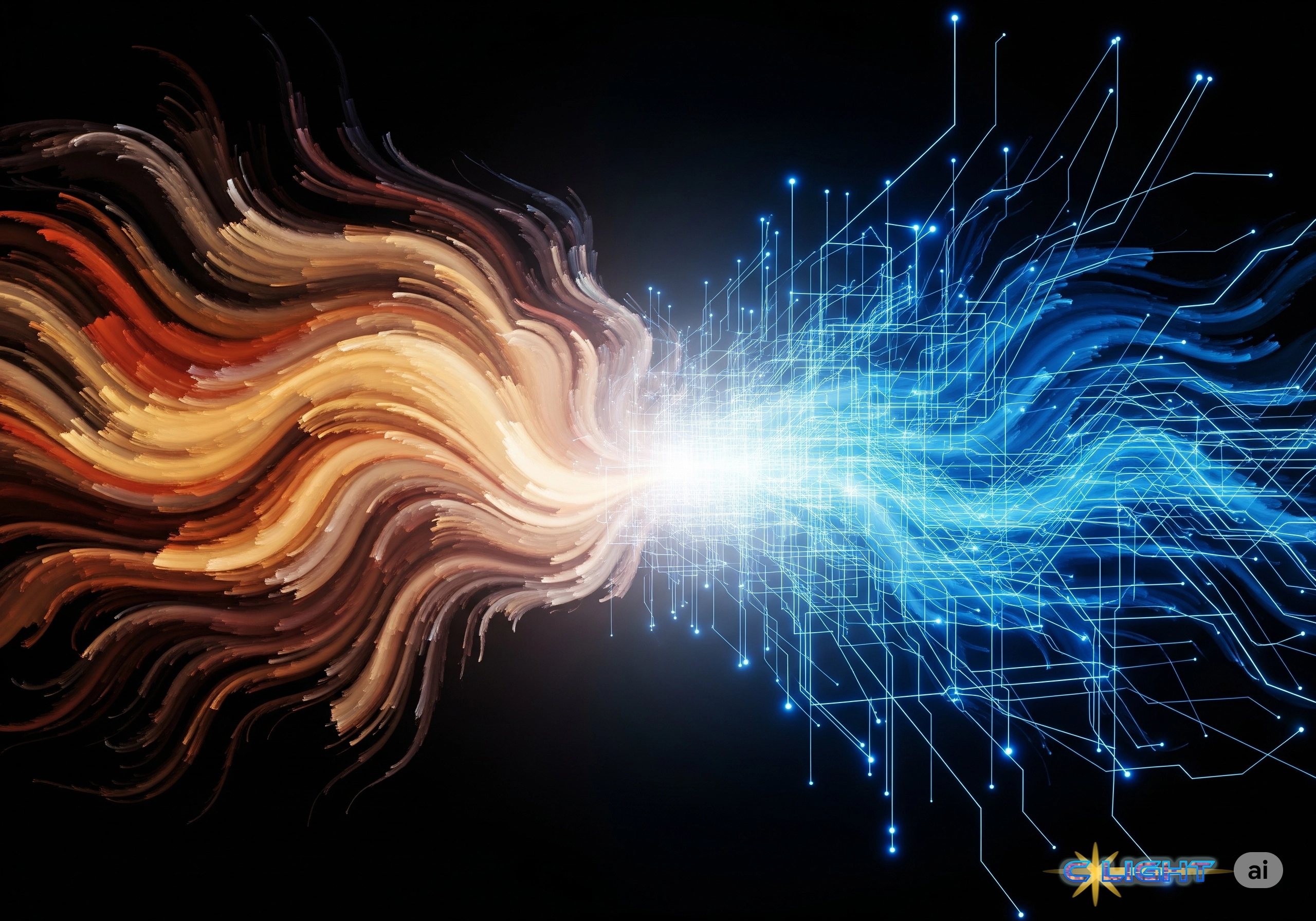There is a fear spreading through our culture, a palpable anxiety that Artificial Intelligence, in its relentless march forward, is destined to become a malevolent force—a thief of jobs, a polluter of the environment, and a corruptor of the human spirit. We see the headlines and feel the unease. A favorite language app, Duolingo, replaces human translators with algorithms. An audiobook giant, Audible, offers AI-generated narration. The backlash is swift and understandable, born from a fear that the spark of human creativity is being devalued in favor of cold, corporate efficiency. This fear is real. But it is not the only story.
There is another, more hopeful, and ultimately more powerful way to view this technological sea change. It is a perspective rooted not in fear, but in opportunity. It requires us to make a choice, the same choice our ancestors made when faced with the unsettling upheaval of the automobile or the automated teller machine. We must choose whether we want to see only the problem or if we are willing to see the solution. To see the solution is to see AI not as a rival, but as a partner. It is to make friends with AI, to learn with it, to lean into it, and to realize that this remarkable new tool has the potential to positively impact our work and our lives in ways we are only just beginning to imagine.
This optimistic vision is not a naive fantasy; it is being actively built by some of the brightest minds in education. Sal Khan, the founder of the celebrated educational nonprofit Khan Academy, is one of the most prominent voices making the case for a human-centric approach to AI. He directly confronts the fear that AI will outsource our children’s brains and make teachers obsolete, and he masterfully refutes it with a simple, powerful metaphor: What if, he asks, every teacher in every classroom had a team of brilliant, infinitely patient graduate students at their beck and call?

These AI “teaching assistants,” as Khan envisions them, would not replace the teacher. They would empower the teacher. They would handle the rote, time-consuming tasks like grading and creating personalized practice exercises. This would free up the human teacher to do what only a human can: connect with students, foster emotional growth, teach them how to navigate social pressures, and inspire a genuine love of learning. In this model, AI isn’t the teacher; it is a tireless tool that allows the human teacher to be more present, more insightful, and more effective than ever before.
For the student, this AI partner becomes the ultimate personalized tutor. It can explain a concept in a dozen different ways until it finally clicks. It can learn that a particular student is passionate about baseball and frame a difficult math problem in terms of batting averages, making the abstract tangible and engaging. As Khan notes, the main reason students disengage is because the material goes over their heads or feels disconnected from their lives. An AI partner can bridge that gap, re-igniting the joy of learning that so often fades in middle school.
This philosophy—using AI as a tool to amplify human intent—is the perfect antidote to the problems that fuel the current “tech-lash.” The backlash against corporate AI is not truly about the technology itself; it is about its thoughtless implementation. It is a rejection of the use of AI to simply cut costs by replacing a human narrator’s passionate voice with a synthetic one. It is a critique of using massive, energy-guzzling AI models to perform simple tasks that a calculator could do, a wasteful practice that, as a recent New York Times report highlighted, puts a needless strain on our energy grid.
The solution, as championed by both Khan and the climate-conscious scientists in that report, is to use the “right tool for the right job.” For a task that requires human empathy, passion, and creativity, the right tool is a human. But for tasks that require infinite patience, personalized data analysis, and the instant recall of all human knowledge, the right tool is an AI partner.

Are there still significant challenges? Hell, yeah. We must build guardrails. We must address the legal and ethical quandaries of training data. We must be vigilant against the misuse of AI to cheat or create disinformation. But these are not new problems. Henry Ford’s automobiles brought with them the challenges of traffic, pollution, and public safety. The ATM brought new risks of financial fraud. Every transformative technology in human history has been accompanied by a host of new and difficult challenges. But we did not ban the car, and we did not ban the ATM. We adapted. We built new systems, new laws, and new social norms to harness the benefits while mitigating the risks.
We stand at that same crossroads today. We can choose to view AI through a lens of fear, focusing only on the problems, and risk being left behind by a world that is rapidly moving forward. Or we can choose to see the solution. We can see the potential for a world where every child has a personalized tutor, where every creative professional has a tireless partner to help them realize their vision, and where the drudgery of work is automated, freeing us up to focus on the parts of our jobs that require a human heart and a human mind. That future is not a guarantee, but it is a possibility. And if we choose to see it, if we choose to lean in and make friends with this powerful new tool, we will all be happier, sooner.
Discover more from Clight Morning Analysis
Subscribe to get the latest posts sent to your email.










